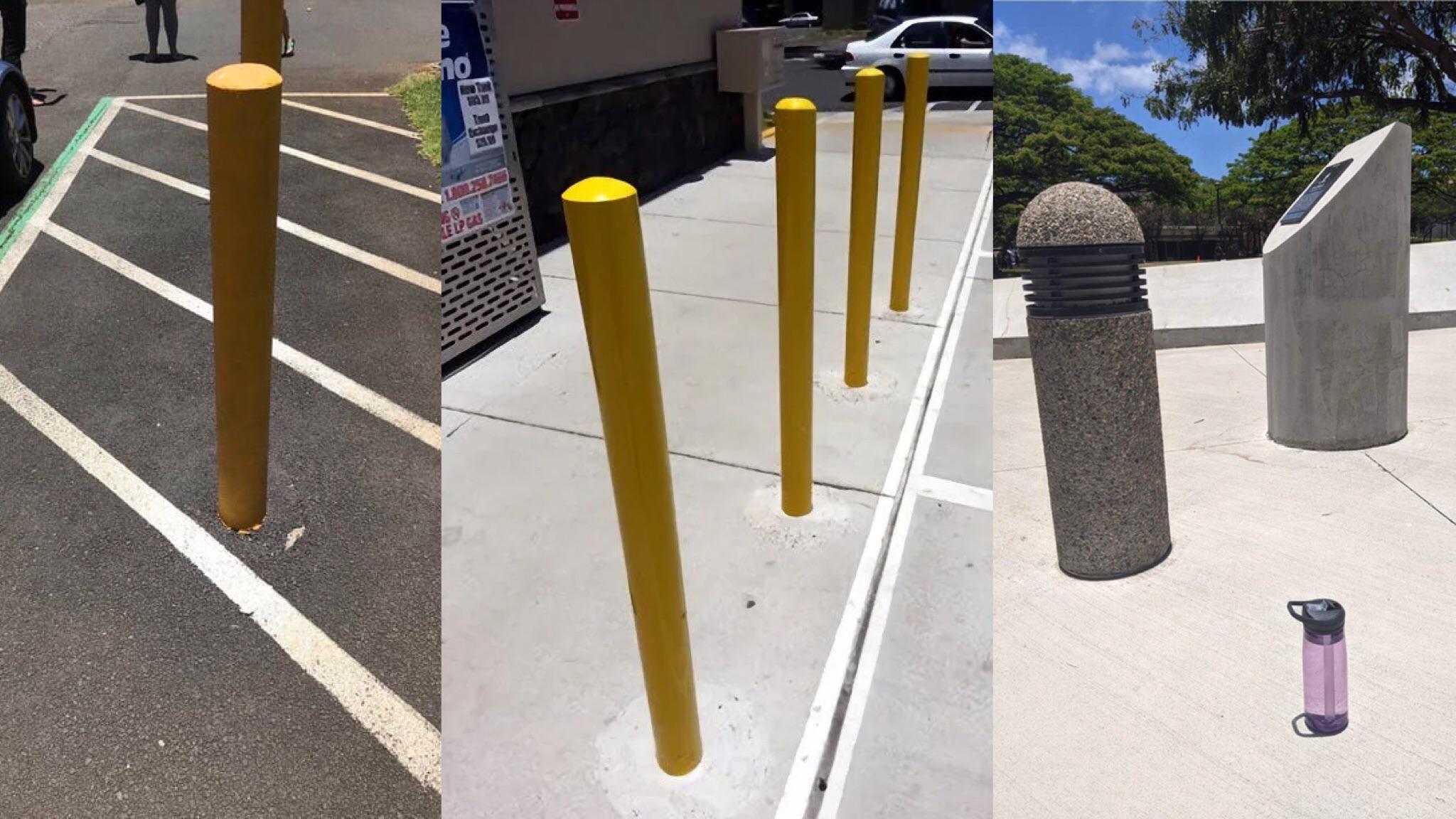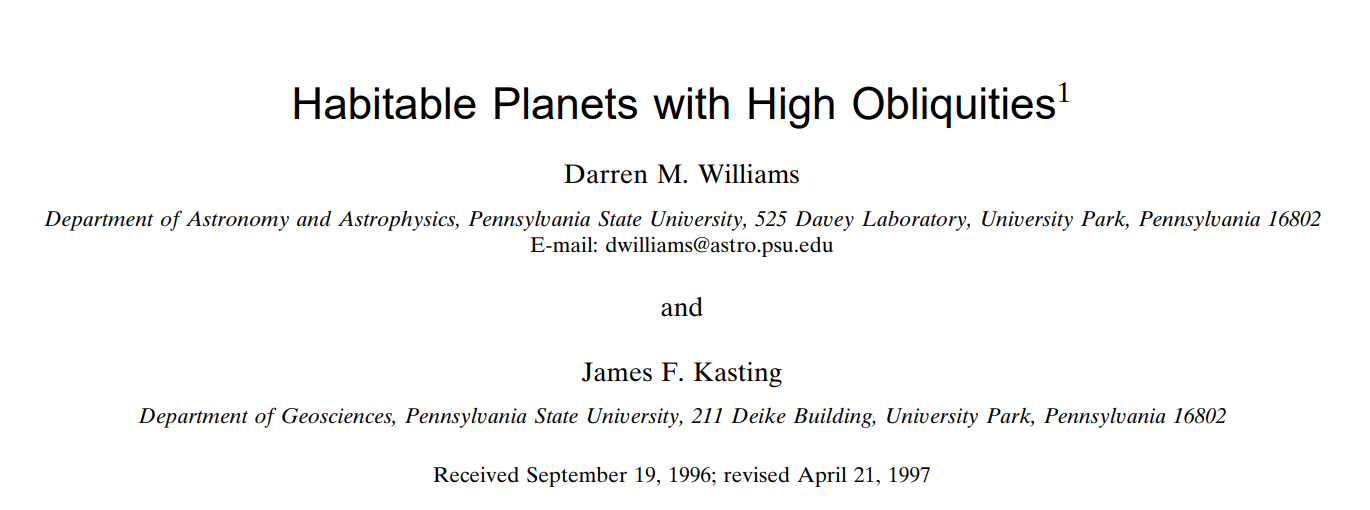Planet
The Numbers
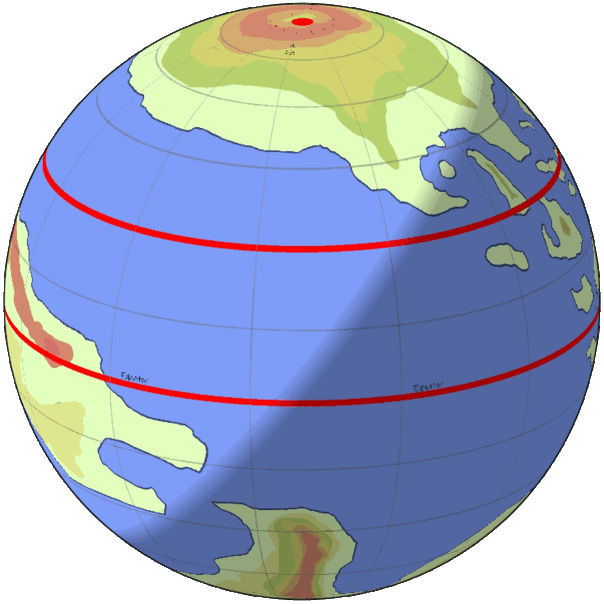
Click on the red lines
The subsolar point is the spot where the sun directly points at the earth. This point is marked by an eerie effect where straight objects appear to have no shadows due to the direct sunlight. The only state in America with a subsolar point is Hawaii where it is referred to as Lahaina noon. On earth the point at any given time is limited to a band near the equator shown by the graph below. Ongrad’s 90° tilt would cause the red line to hit every square mile, turning the map completely red as it slowly spirals up and down the planet. Everywhere on Ongrad the daylight is unique, altered by its 90° angle. Ongrad's representation on this graph would be entirely red as the line circles the globe squished so close together.
What's going on at the north pole?
At the north & south poles, a much different story is told during the year. The term solstice doesn’t really apply here because at the poles one day/night cycle lasts the entire year. The beginning of the year starts at the northern summer “solstice”. This marks the halfway point of the north’s long day. By this point the sun has been hitting that pole for just over a quarter of a year, and the southern pole has been in darkness for just under a quarter of a year. This will continue for another quarter until the equatorial equinox, for this short period the sun can be seen low on the horizon of both equators. For the south pole it’s the start of a long day, and for the north pole it's the beginning of a long night.
What's going on at plus forty five latitude?
Moving north an equal distance away from the equator and poles would put you at latitude +45° here’s what would happen then. The days would be much longer than the nights. The sun would slowly bob up and down as the days went on, subsequently dipping lower and rising higher. Halfway to the first equinox the sun would reach a subsolar point creating a surreal effect that makes shadows disappear on some objects. During each equinox the nights will equal the days. After the first equinox the nights will continue to grow longer until the northern winter solstice. Now the nights will become shorter and shorter until the calendar resets and they continue the cycle.
What's going on at the equator?
Starting at the equator going outward you would see mostly normal days, aside from at the beginning and middle of the year. If you stood at the equator when the north and south poles are facing the sun directly you would see the sun just peak over a flat area that would last for about ___ days until the sun went back down. You would have shorter days until the equinox when the day would be the same time as the night. Following the equinox the days would get longer again until the solstice when the cycle would repeat.

Temperature
Ongrad lies on a 90° angle in relation to its sun. Due to earth’s relatively close distance from our sun, a 90° angle would boil on one side of our hemisphere and freeze on the other. But an additional 70 million kilometers (210 km total) would increase the amount of C02 in the atmosphere enough to stabilize the the temperatures keeping them inside the range of 3 to 46 celsius. For simplicity sake I kept the orbiting star's mass the same as our sun.
(Planetary position is based of off the above paper.)
Time
Moving the planetary body so much farther away causes problems and changes on several different levels. First and foremost is the difference in how long the years last. According to Kepler's third law, the planetary body’s rotation speed around the sun relies almost entirely on its distance from the star. Increasing the distance by an extra third means that the previous 365 day year would turn into a 607 day year. I especially hated the idea of having such a long year because of the 90° angle my planet is on. In an ideal world I would have a much shorter year allowing for more dynamic and frequent season changes. To solve this problem I changed the planet's rotation speed at the equator from 1,670km/h to 1,628km/h, which combined with its larger size changed the day from 24 to 32 hours. Adding those hours causes the length of a year to decrease to 455.25 days in one year. The 32 hour day makes it seem like the year is shorter when the time it takes hasn’t actually changed at all. I loved this compromise because I didn’t break any actual physics rules (that I know of) and got a shorter year by tolerance stacking such a small percentage of a number decreasing the speed of the planet by 2.5%.
Day Length!!
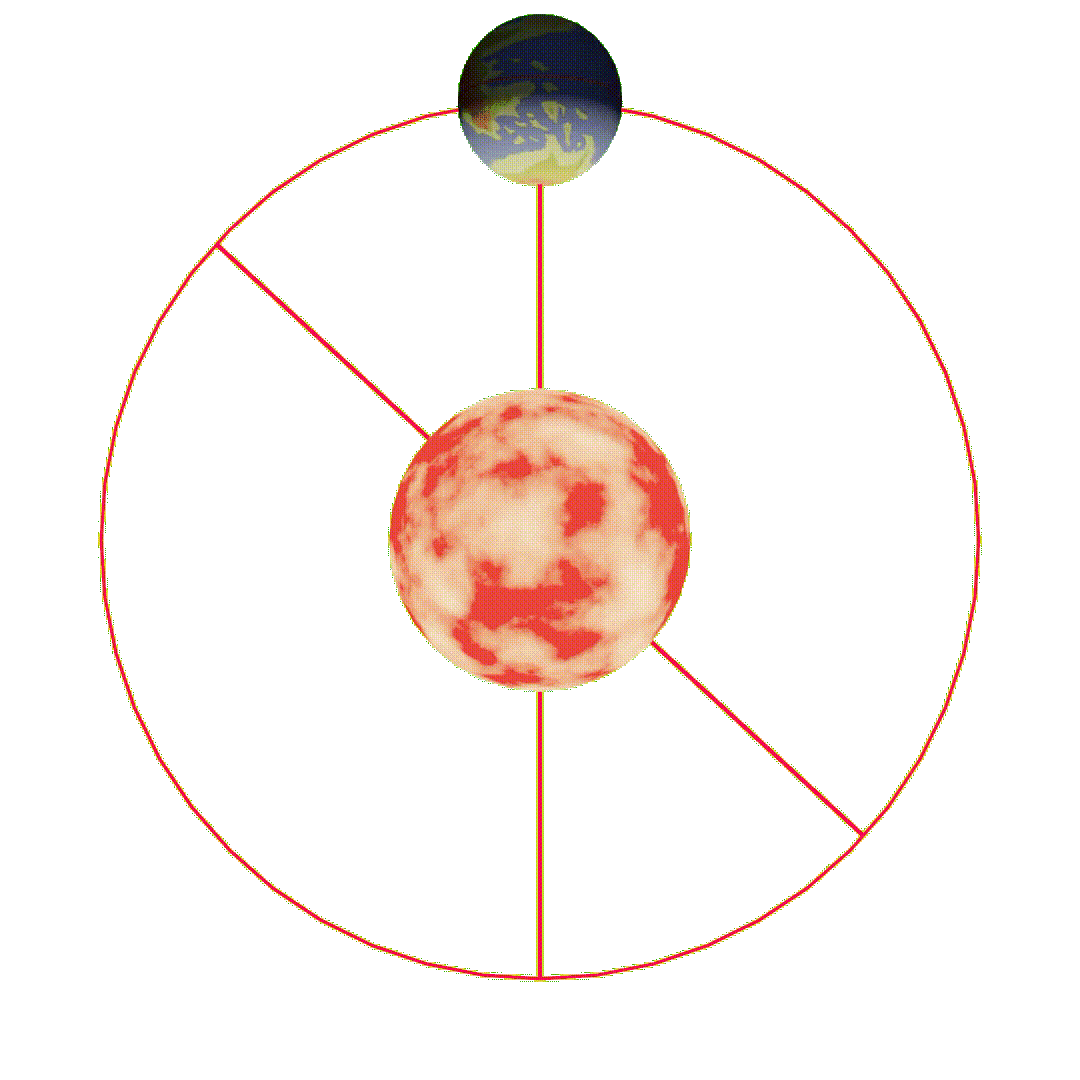
Seasons
This is a gif shows how the seasons and day night cycle would play on the planet. The globe actually spins 455 times each orbit, but I've slowed down the spinning of the globe so you can still see the countries. I've stopped the planet's orbit at two points to show what a day at that time of year would look like.
The first stop the planet makes is directly below the sun and shows a day on the summer solstice. At this point the north pole has been bathed in over 110 days of constant sunlight, and has another 114 more days until the sun dips below the horizon. The top half of the globe receives constant sunlight while the bottom is in a perpetual night. Each pole has one day a year, as the sun shows over the north pole, it sets on the south pole and vice versa. Without the sun to warm up the biannual night or the darkness to cool off the biannual day the weather at the poles reaches extreme temperatures. As you get closer to the equator the days and nights become more regular and the resulting weather becomes milder. During both solstices on the equator the sun get very low and circle the sky. This is what it would look like but more yellow.
The Second stop the planet makes is when the planet is at a 45% angle to the sun. At this point the sun is about The north pole has had 170 days of sunlight and has 57 more days until the sun sets.
The globe is 1.3x larger than earth
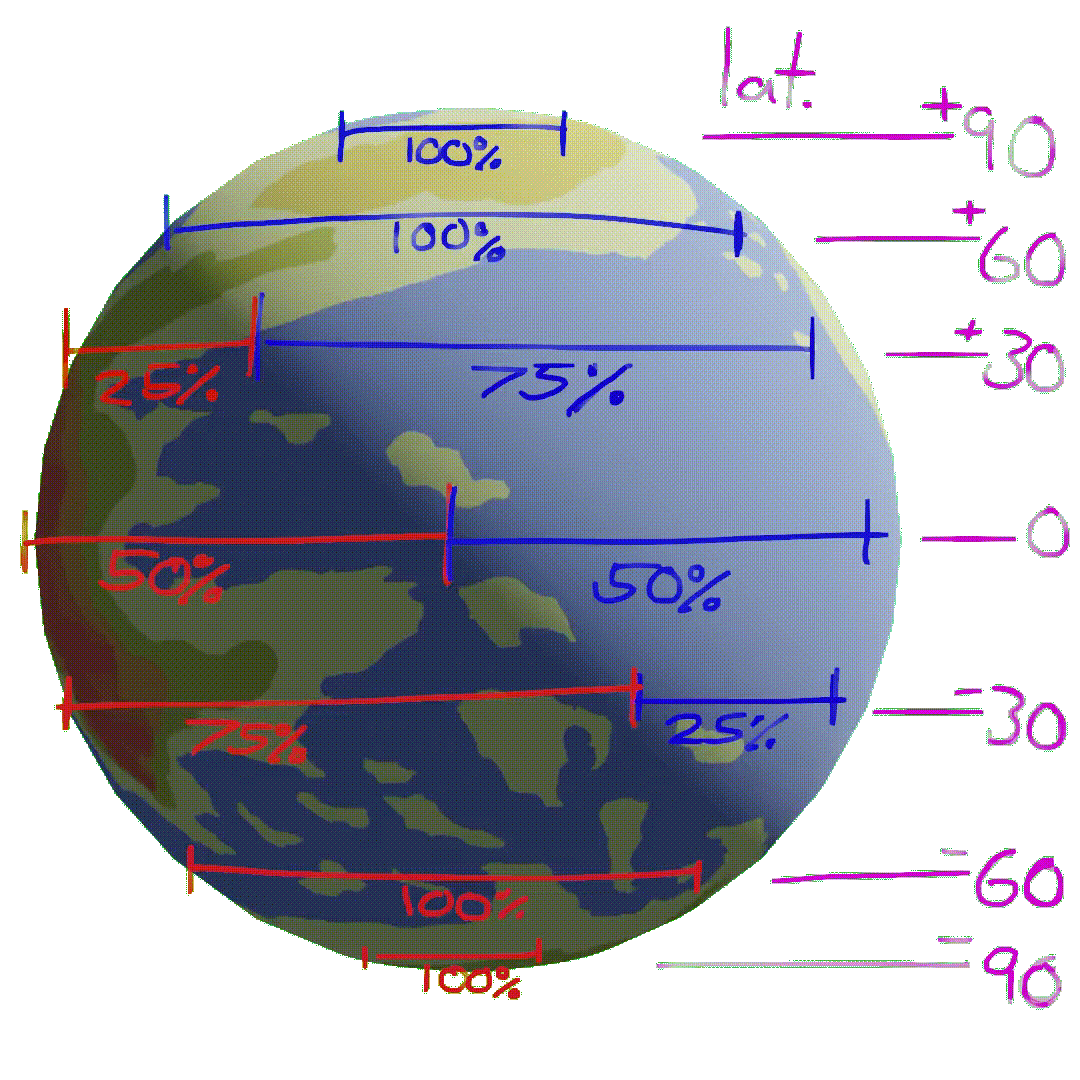
<-- Examples:
- +90 the sun will be out for 42 hours. (100% of the day)
- +60 the sun will be out for 42 hours. (100% of the day)
- +30 the sun will be out for 31 hours. (75% of the day)
- +-0 the sun will be out for 21 hours. (50% of the day)
- -30 the sun will be out for 8 hours. (25% of the day)
- -60 the sun will not rise. (0% of the day)
- -90 the sun will not rise. (0% of the day)
Latitude:
Day's & Nights
If you view the planet from an angle perpendicular to the orbital plane (as seen in the accompaying gif). The number of sunlight hours per day varies based on latitudinal location. Choose a point on the globe, draw a horizontal line across the globe at that latitude. The percent of the line in sunlight is the percent of the day that will have sunlight. Note that this graphic is a snapshot of a single day near the end of the year. In reality this shadow line is constantly changing as it slowly rotates around the planet during the year's cycle.
At the equator the sun would rise at 10:30am, peak at 21:00pm, and set at 10:30pm.
The Poles!
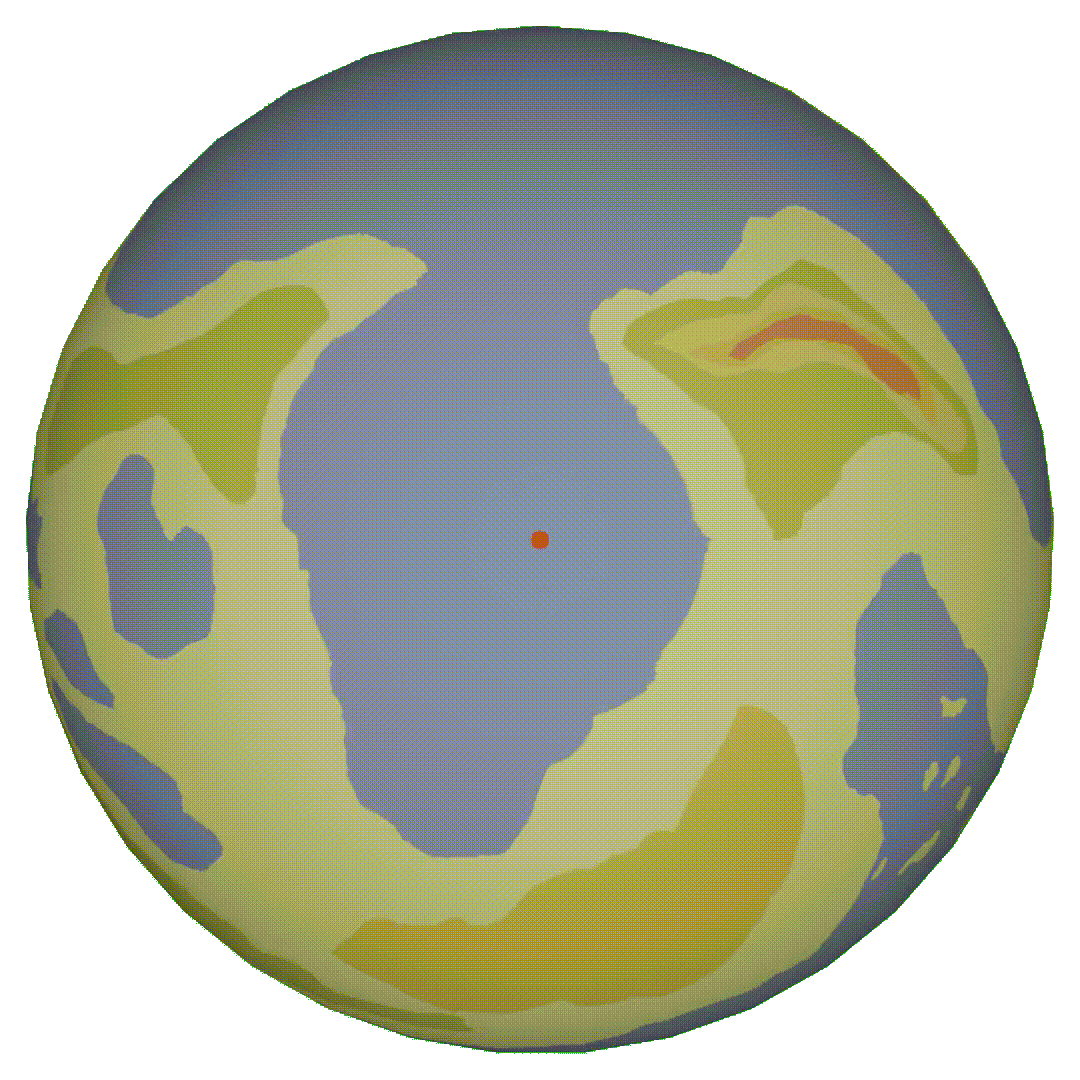
The north pole is a vast bay, as seen in the image above. In the extended winters, the ocean waters in the bay freeze from the complete lack of exposure to direct sunlight for several months prompts the formation of a substantial layer of ice. The bay freezes over and thickens enough to bear heavy weights. Conversely, in summer, the constant direct sunlight leads to the rapid melting of the thick ice layer and completes the thawing process within about three months. Mercantile ships often navigate these waters during the summer months but are either stored in expensive dry docks or docked outside of the bay for half the year. During the winter it is possible to traverse the ice from one side of the bay to the other. Note that the aforementioned ice is oceanic ice, not to be confused with glaciers which are on land. This is of particular importance as ice that is frozen in the ocean does not affect sea levels because its weight does not change and will displace the same amount of water as before freezing.
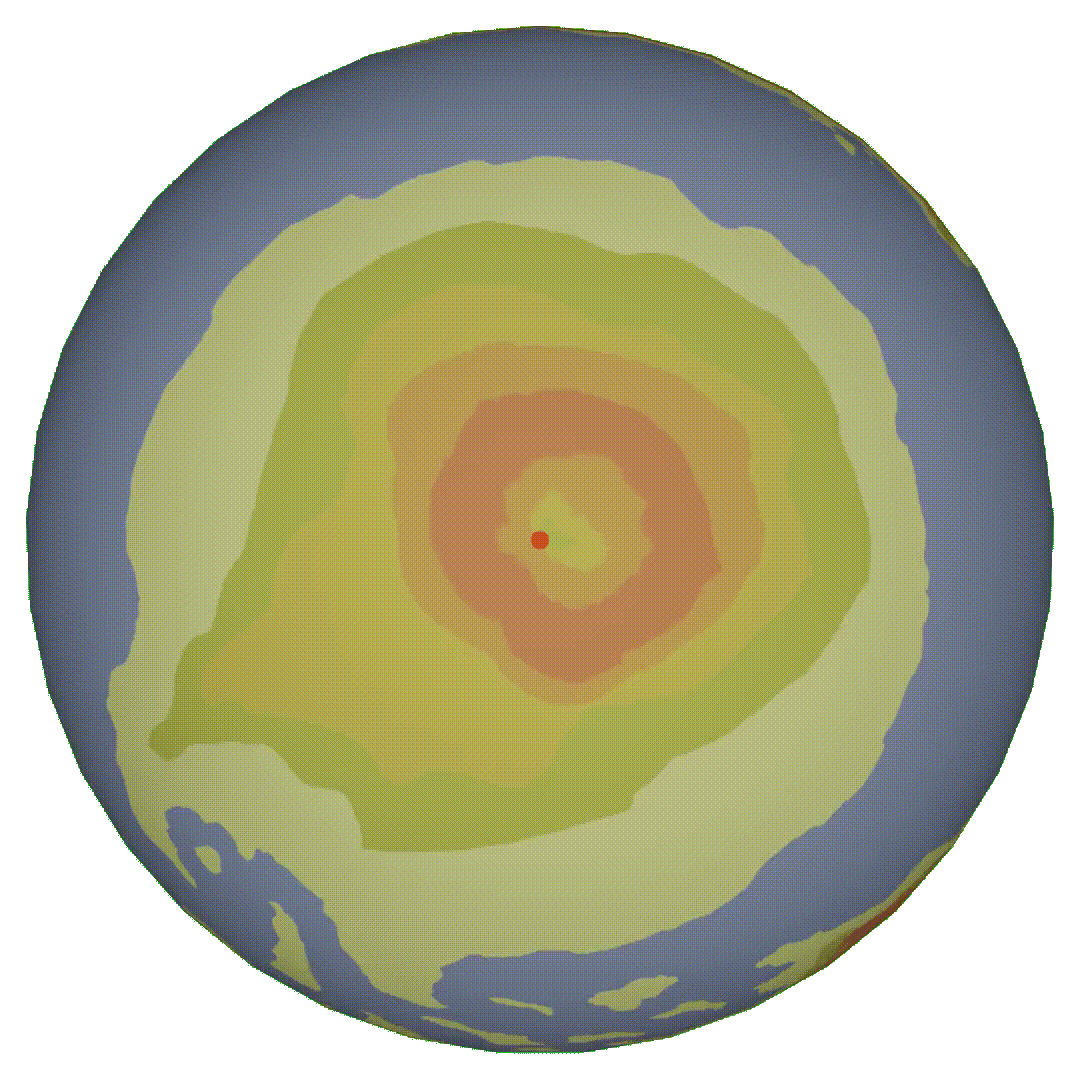
The South Pole
The plant life:
The South pole is very far away from our story, the only two characters who have been to the south continent are Esme & Aesop. Esme and Aesop use a portal to travel to the continent and they believe it to be another plane of existence e.g. a heaven or hell.
The south pole is drastically different from anywhere else on the planet. The majority of the story takes place in the northern hemisphere meaning that the weather condition are the opposite of whatever is happening in the north. During the summer, heat from the surface causes the air to rise which is replaced by cooler air over the ocean surrounding the continent. The ocean air coming in brings large amounts of rain and wind, this combined with the excessive amount of sunlight creates flooding and massively stimulates the plant life. Nearly all plants on the south pole continent are annual, they die and regrow every year. The plants are mostly white to reflect as much sunlight as possible in order prevent photoinhibition from the constant direct sunlight. These plants are ferocious and grow incredibly fast in to out complete their neighbors for sunlight. Once the long day comes to an end, the plants drop their hardy seeds for the next summer and wither away. The amount of plant mass amassed during the time is staggering and when night finally comes the plant detritus litters the continent's floor. Taking advantage of the situation are several species of mushrooms who feast on the near infinite amount of new nutrients. Some common species of mushrooms can grow up to 15 feet creating actually mushroom forests where their spores land. The mushrooms run out of food and die off a short time before the coming of the new day when the dormant seeds of the previous year's plants come to life and start the cycle a new.
Inhabitants:
The inhabitants are ape men, they are shorter than people and have two different eyes. One eye is larger and like an owl's eye able to see best in the dark, the other eye is smaller and built to see in the daylight. Twice a year they move a bandage over whichever eye is not being used. Their excessive fur keeps them insulated for the hot and cold seasons and are generally more nomadic people. They eat vegetation in the summer months, fungi during the winters, and meat from livestock all year round.
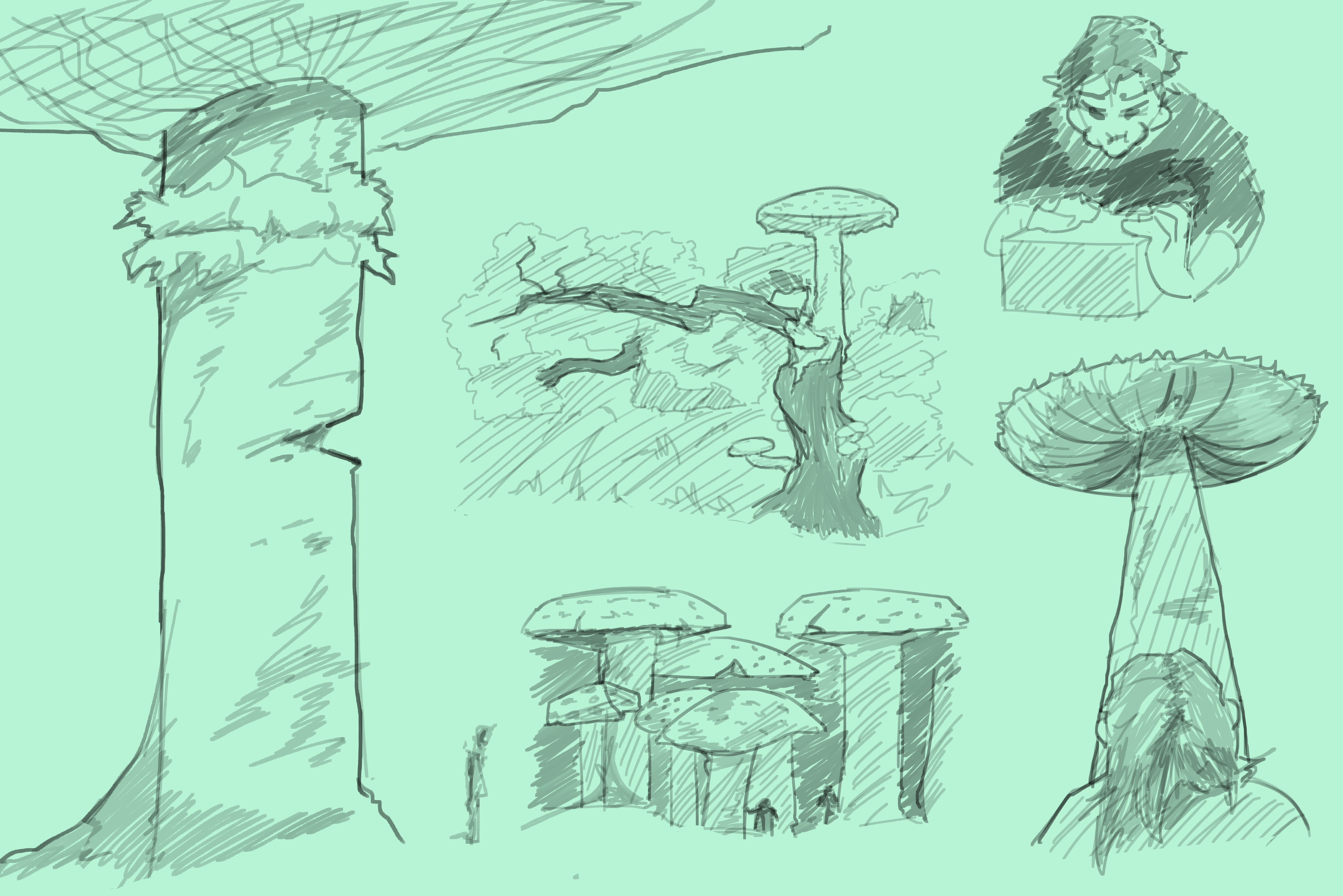

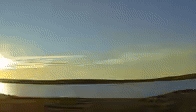
The Equator!
For almost the entire year the days are equally long as the nights. This means that the temperature stays the same most of the year. Every degree change in latitude changes the length of the cycle. Twice a year (at the beginning and midway point) the equator will not experience true night. For 11 days before the new year, and 11 days after the new year, the sun will circle low on or just below the horizon.
Size of the bay
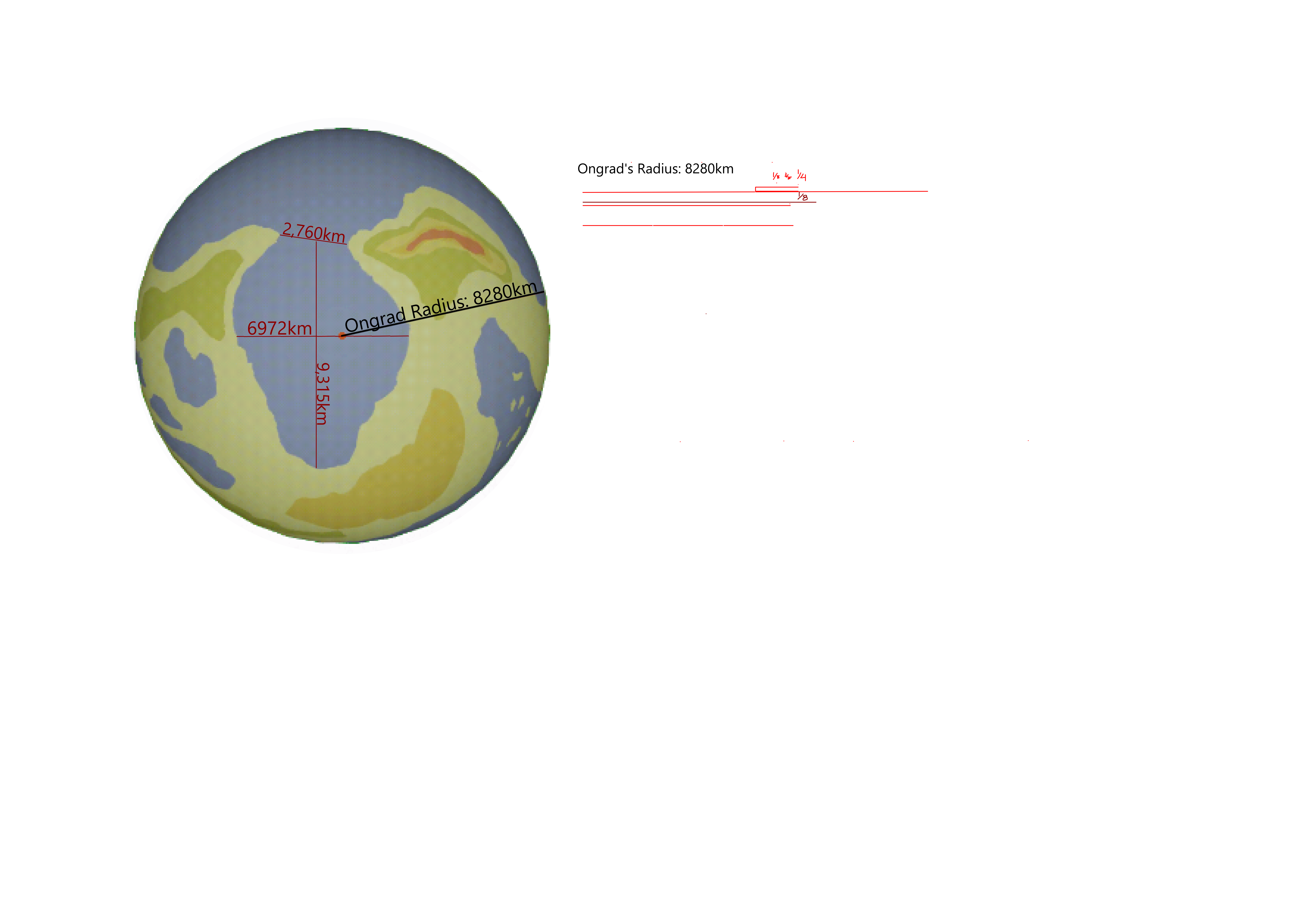
Ongrad has a radius of 8280km making it 1.3x larger than earth. The distance from one tip of the bay to the other is 2,760km. The greatest distance from one end of the bay to another near the center and 6972km away from one shore to the next. From the top of the bay to the bottom is 9,315km. The size of the planet was chosen because the days are 1.3x longer which means that a normal person will be able to travel similar distances on a large scale.
Safely sailing across the bay ocean is only made possible within the last 50 years thanks to the invention of better nagivation tools allowing for the tracking of latitudinal distance. This is due to the heavy currents resulting from the seasonal heating and cooling of the bay. The water can get so cold in the winter as to freeze almost enterily over but due to the size of the bay only about 1 in 4 years have a cold enough winter to freeze all the way down into the passage. Before the last 50 years the safest way to cross contientes was to caravan across the frozen water. The downside being that only way back is when the passage freezes over again which may no be for several years.
Sun's Plan
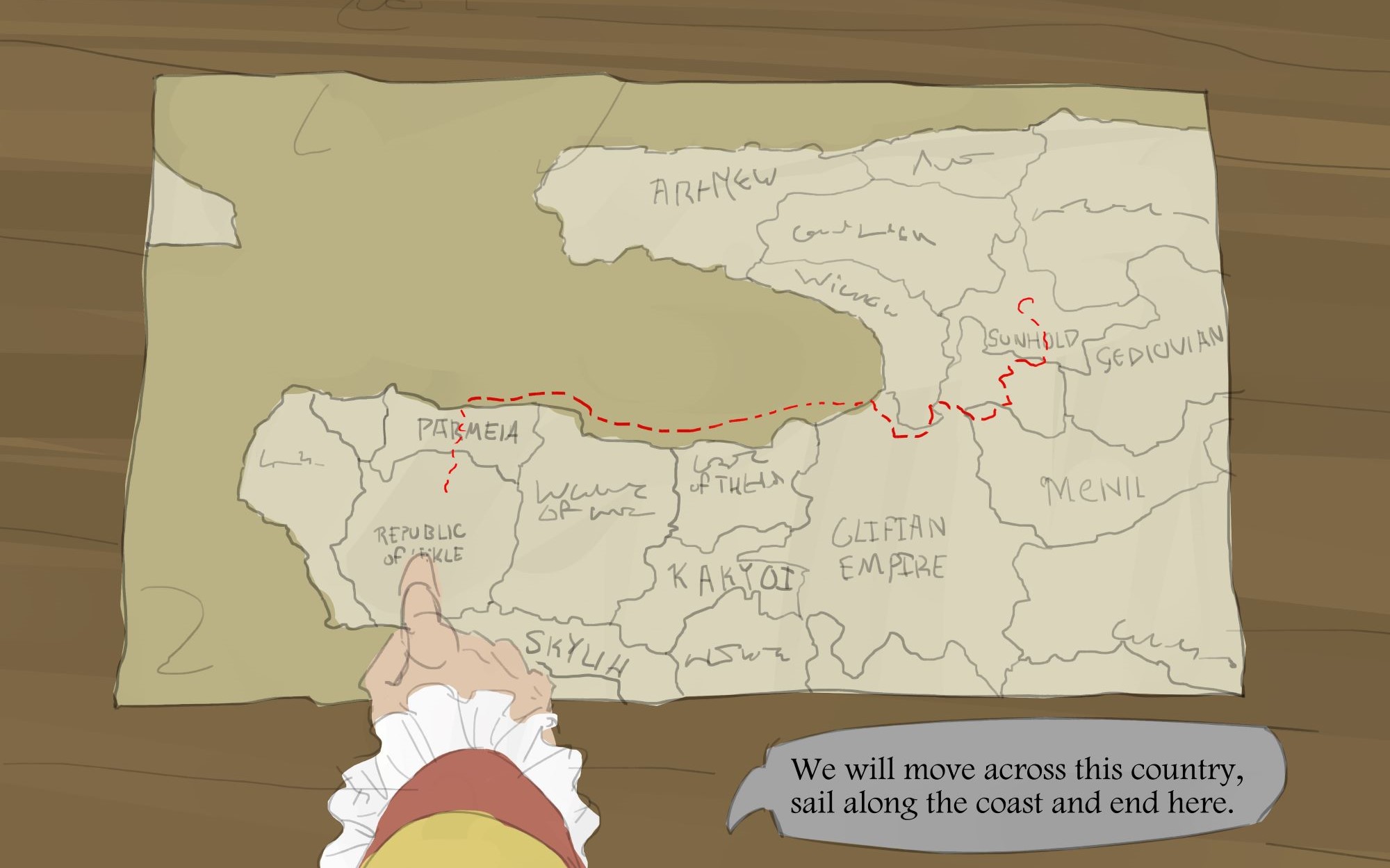
- The journey begins in the kingdom of Sunhold in the town of Weilheim. This is where Theodore was born and raised. Sun meets Theo here at an old church, Sun coerces Theodore into joining them through intimidation. They pass through the capitol Cales then make a last stop at the town of Valla. The group follow a major path into the Clifian Empire. View Full Image
- At border they encounter a large contingent of guards, but are allowed to pass using their documents from Lekle. They visit the small town Cintinos, then cross the river to Almendro, head into Roliba, go through Shadarepsos into the great city Nido. Nido was once very close to the four boarders of Sunhold, Menil, the Winian Coast, and the Clifian Empire, but no longer borders Sunhold due to Clivian expansion. They get on a boat and sail down to the old capitol and port city Zmur.
- They take a boat to Parmeia stopping at Theolis and Heleuthos of the Republic of Theolis
- On the same boat the port in Peicos, and Scearna of Argosia.
- They land in Chiostos, Parmeia and travel south to Malar and another short distance to Lekle
- They pass through Plasegmet to meet Ronan in the capitol Myotiliphe.
The Moon
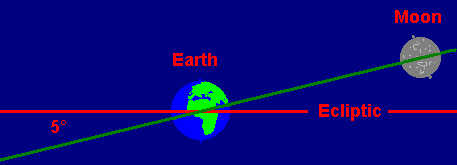
The moon is larger and closer than earth's moon. This means that tides will be stronger, but other than that nothing much else changes. Solar eclipses would be longer, and effect a wider area of the planet. While Lunar eclipses would be larger, more prominent and brighter.
Continents
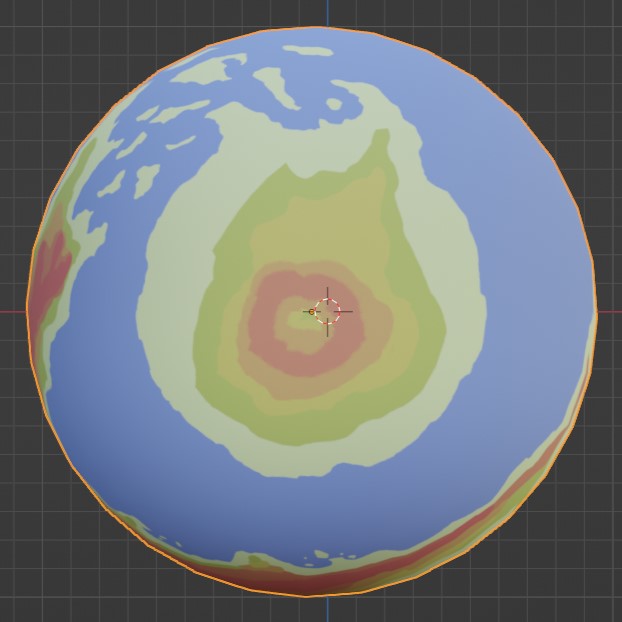
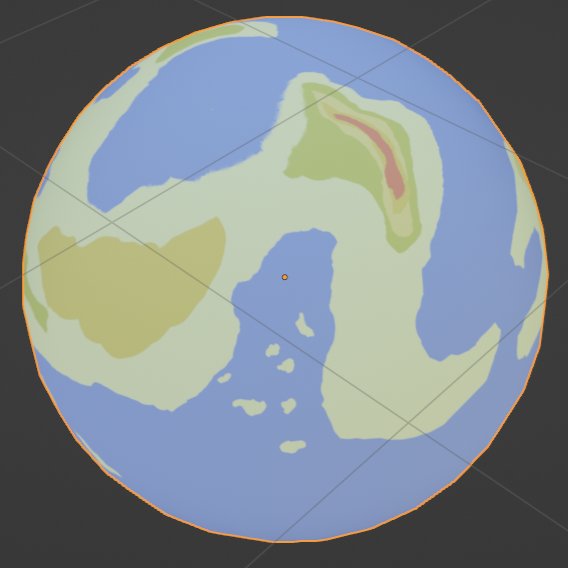
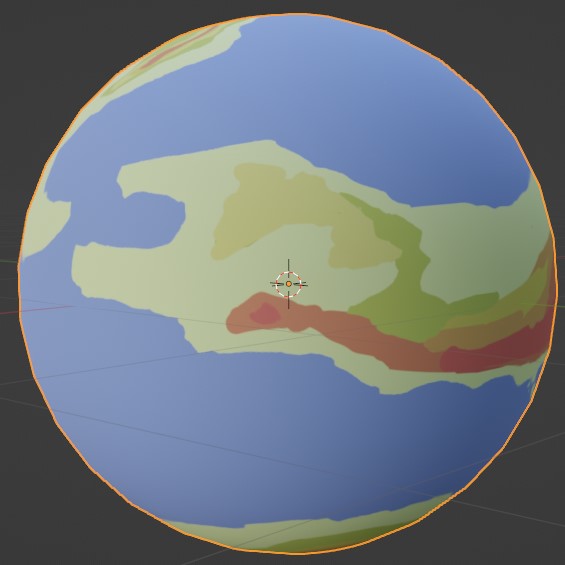
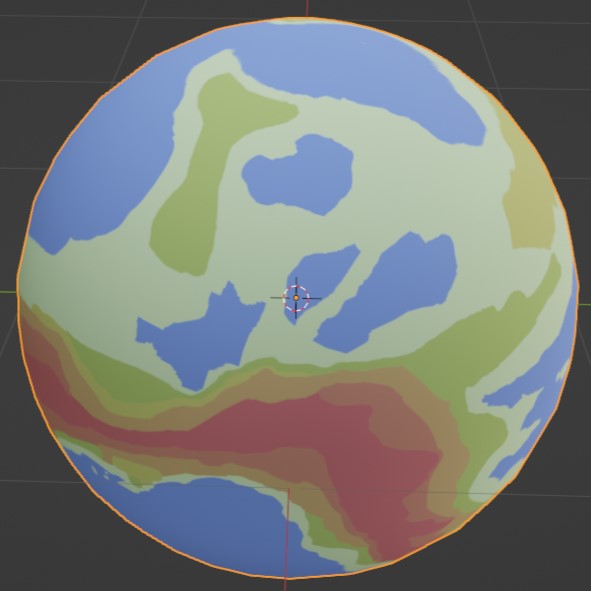
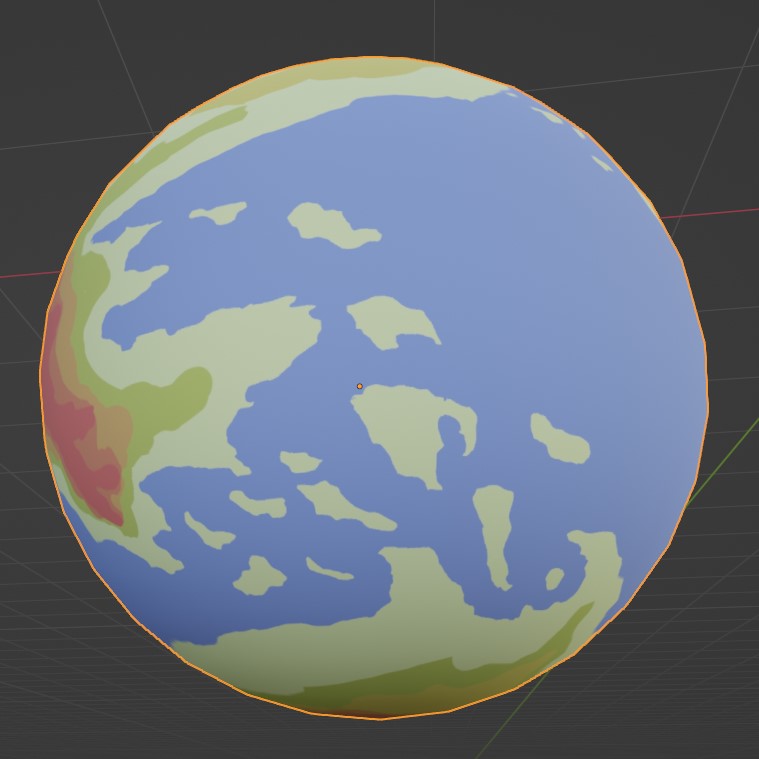
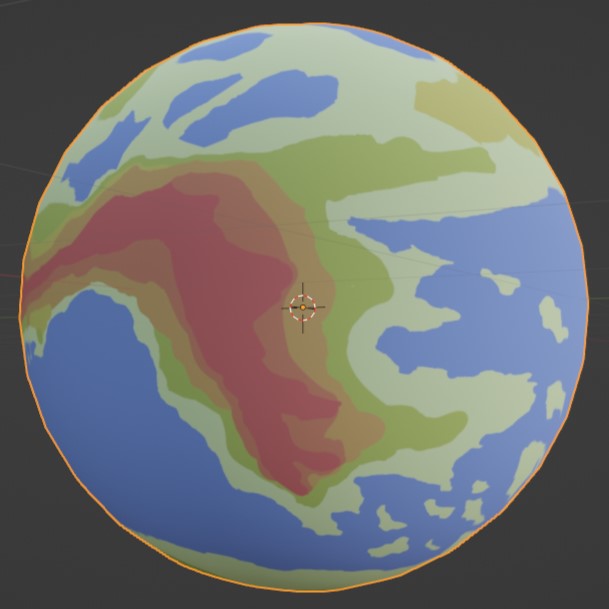
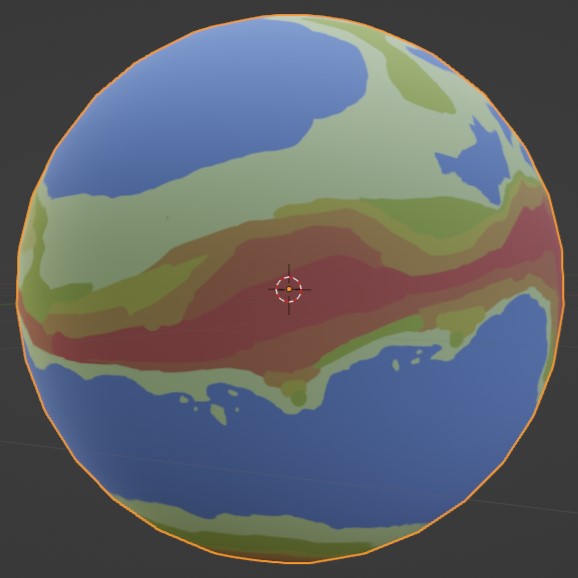
- Southern Continent: Largely unknown to outside continents, no large cities and very difficult living conditions. Domain of the god of the spark
- Tael: Largely uninhabited because a majority of it is in very high latitude. Domain of the god of creation.
- Cradle: The cradle of civilization, lush lands at the equator creates a dense population. Domain of the god of agriculture.
- Beli: Large lakes, very harsh northern condition. Domain of the god of Ethics
- Gwin's Islands: 13 large islands that connect the main land mass to the southern landmass. Domain of the god of cooking.
- Alae: Large mountains on the western coastline, very green and lots of jungles. Domain of the god of medicine.
- Guttur: Flatter less populated version of the cradle, middle child of the world. Domain of the god of language.
